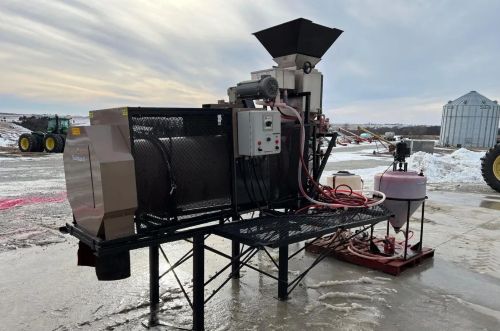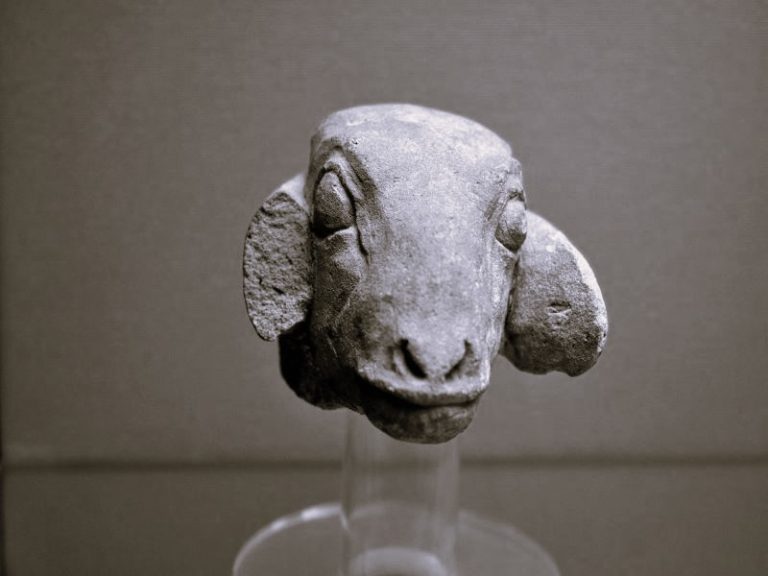

“Thanks to Trump, the total cost of my seed treater had risen from $12,810 to $26,132.”

By Mark Peck
Farmer
In March, following President Donald Trump’s imposition of 25% tariffs on goods from Canada and Mexico, the United States’ largest trading partners, and anticipating Trump’s April 2 announcement of a baseline 10% universal tariff, I checked what it would cost me to treat soybean seeds this year.
Each year on our Wisconsin farm, my mom, my dad and I, along with about 3 helpers, raise 500 acres of soybeans, 600 acres of corn, 150 acres of alfalfa and 60 acres of oats, in addition to caring for 48 acres of pasture and 100 acres of woods. We also milk 80 cows and have a 35-head herd of beef cattle. I am a 36-year-old, fourth-generation farmer and have farmed my whole life.
Mark Peck is a fourth-generation farmer in Chippewa County, Wisconsin. (Courtesy of Mark Peck)
My local farm supply business in Cadott quoted me $25 to treat an approximately 50-pound bag of soybeans with a coating that includes heads up (for white mold) nematiside inoculant, fungicides and insecticides to protect the seedlings. For the 560 bags of seed I would need this seemed high, so I sought a better, cheaper alternative.
Online, I found a domestically sold seed treater for $50,000, while a computer-controlled model cost $63,000. No wonder treatment costs $25 a bag, I grumbled.

Then I saw an ad for a seed treater on Made-in-China.com. The company quoted me $7,800 for their seed treater. With additional options like computer control, an extra biologicals bucket, a storage cabinet and a top hopper added in, plus shipping, the machine came to $12,810. Finally, something I can afford, I thought.
However, when I asked about tariffs, Cathy, the factory sales rep at Kaifeng Machinery, in Kaifeng, Henan province, was hesitant. Tariff rates fluctuated so much that no one knew what Trump would impose next. In February and March, China had responded in kind to Trump’s tariffs, levying duties on American agricultural machinery and key farm exports like soybeans.
Talking to a customs broker before Trump’s April 2 tariff announcement speech, and shortly before the factory finished manufacturing the seed treater. I learned the cumulative tariff at the time totaled 45%, including 25% from Trump’s tariff war in 2018 plus 20% imposed by Donald Trump on March 4. That added $5,764.50 to my cost, bringing the total to $18,574.50.
Then in the wake of Trump’s so-called “Liberation Day” (April 2), which imposed an additional 34% tariff on Chinese imports, China suspended some U.S. agriculture imports like sorghum and poultry.
In response, on April 8, Trump announced he would raise tariffs on China to a total of 104% if China did not remove its tariffs, which China refused to do. Consequently, on April 9 (my birthday), thanks to Trump, the total cost of my seed treater had risen from $12,810 to $26,132. (Later that day, Trump announced he would pause the “Liberation Day” tariffs for 90 days. At the same time he raised the cumulative tariff on China to 125%, while keeping in place the 10% universal tariff and the 25% tariff on both Mexico and Canada.)
This kind of uncertainty and the skyrocketing costs associated with these tariffs means that it will take me an extra four years to pay for the treater, and, consequently, I will have less money to invest elsewhere in my business. Multiply this millions of times nationwide, and the result is trillions of dollars lost, with fewer jobs, products, goods and services for everyone in the country.
READ ENTIRE ARTICLE AT BARN RAISER


